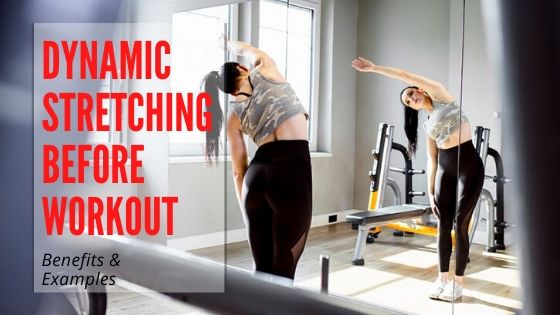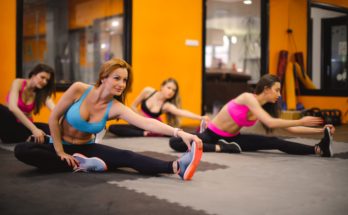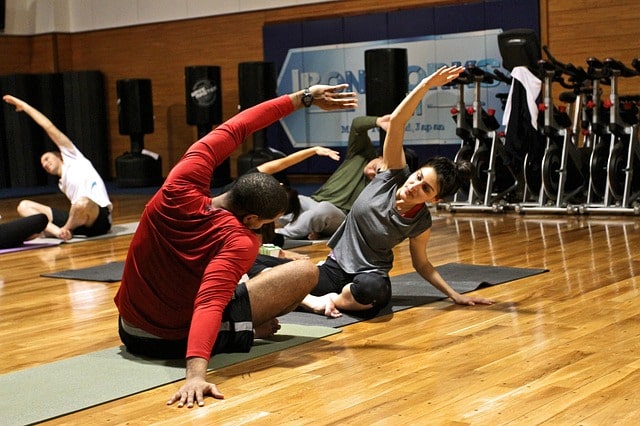Whether you’re warming up before a workout or before any sports activity, a dynamic stretching routine can provide you with a lot of benefits.
This article will explain everything about dynamic stretching – definition, benefits, and examples.
What is Dynamic Stretching
Definition: Dynamic stretching includes those movements of the body in which your muscles and joints go through a full range of motion.
Dynamic stretches should be done before the workout or before any sports activity. These stretches help in warming up the body before any exercise.

It basically informs your muscles that they are going to use up extensively in the next few minutes.
Here are the five major benefits of doing dynamic stretching before the workout.
Benefits of Dynamic Stretching
Including dynamic stretching in your warm-up before the workout provides various benefits. These benefits won’t let you skip your dynamic stretching routine before any kind of exercise.
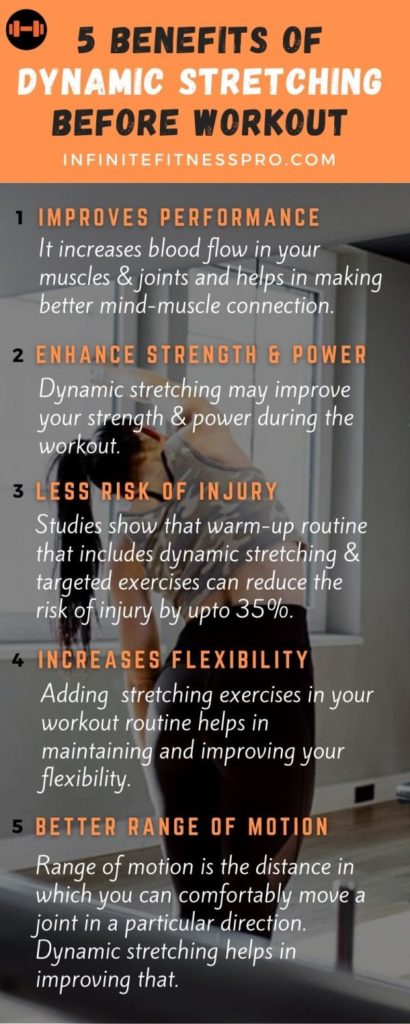
Let me explain them in detail.
1. Prepares your body for the Workout
Dynamic stretching is an effective and proven way to boost your workout performance. It helps in preparing your muscles and joints for a demanding workout.
Dynamic stretches raise body temperature and increase blood flow in your muscles and joints.
Studies show that dynamic stretching before the workout helps in making a better mind-muscle connection
Related: 5 Ways To Improve Mind-Muscle Connection
2. Enhance Strength & Power Performance
A study published in the British Journal of Sports Medicine says that dynamic stretching enhances power and strength performance.
On the other hand, traditional static stretches before the workout don’t provide such a benefit. Instead, static stretching might degrade your muscular strength.
3. Reduces Risk of Injury
Lifting heavy weights without a warm-up can increase your chances to get injured. It’s very important to give proper warm-up to your body.
Read more: How To Do Warm-up Before A Workout
A warm-up routine is incomplete without dynamic stretching. Along with the muscles, it warms up your joints and ligaments too.
A 2008 study in The BMJ shows that a proper warm-up routine that includes dynamic stretching, and targeted exercises reduce the risk of injury by about 35%.
Hence, it becomes essential to do dynamic stretches before the workout.
4. Increases Flexibility
As you do weight training and increase your muscle mass, you may lose flexibility. Adding some stretching exercises to your workout routine helps in maintaining and improving your flexibility.
5. Better Range of Motion
Range of motion (ROM) is the distance in which you can comfortably move a joint in a particular direction.
However, several studies prove that dynamic stretches help in increasing the range of motion of your joints.
Dynamic Stretching Examples
Here’re some examples of dynamic stretching exercises you should add to your routine:
Upper Body Dynamic Stretches
Arm rotation

1. Stand with feet shoulder-width apart. Put your arms at shoulder height out to the side.
2. Start rotating your arms slowly. Start with small circles and go on to larger ones then.
3. Perform around 20 circles on each side.
Arms cross chest
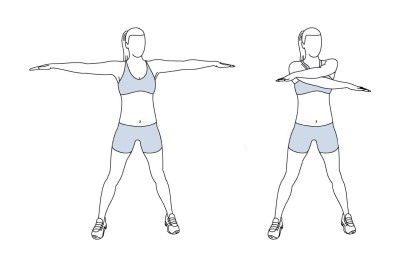
This exercise works on your shoulder joint. Do about 10-20 reps.
Bent over twist

This exercise is very good for the whole upper body – including the shoulder, spine, and core muscles. Do at least 20 reps.
Lower Body Dynamic Stretches
Leg swing (front & back)
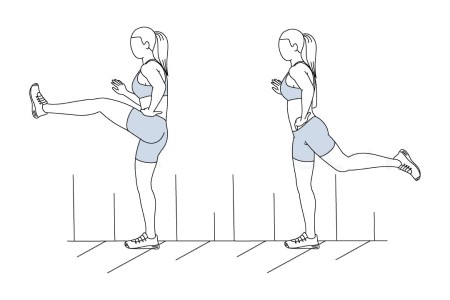
Try to keep your upper body still while doing this exercise. Do 10-20 reps for each leg.
Leg swing (side to side)
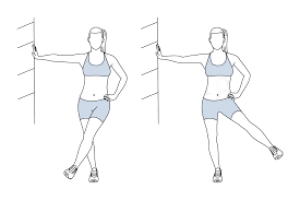
Do 10-20 reps for each leg.
Lunges
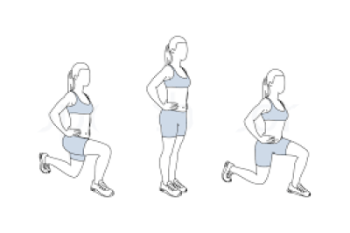
1. Lunge forward with one leg. Don’t extend your knee ahead of your ankle.
2. Bring that leg back and stand straight.
3. Lunge forward again with another leg. Do at least 10 reps with each leg.
Dynamic Stretching vs Static Stretching
There are various techniques of stretching – static, dynamic, ballistic, and PNF stretching. Static and dynamic stretching are the two most commonly practiced techniques among them.
Both have different benefits, timings, and ways to do it.
Dynamic stretches helps in warming-up the body before workout and static stretches are for cool down after the workout.
Hence, dynamic stretches performed before the workout whereas, whereas static stretches should be done at the end.
You must do dynamic and static stretching before and after the workout respectively for at least 5-10 minutes.
It prepares your joints and muscles for high-intensity exercises, reduces the risk of injury, and improves workout performance, and flexibility.
Read more: Dynamic vs Static Stretching: What’s the Difference?
When To Do Dynamic Stretching
You should do dynamic stretching at the beginning of any exercise. It helps in warming up your body and prepares it to get moving. You can do it:
Before weight training: Studies show that dynamic stretches before the workout helps in increasing power and performance.
Before sports and athletics: Studies show that dynamic stretches are beneficial for including basketball, cricket, and football. It also helps in high-intensity endurance sports like running.
Before doing cardio: You can do some lower body dynamic stretches before doing cardio.
Are Dynamic Stretches Safe?
The main benefit of doing dynamic stretches is to prevent injuries. But you should avoid doing them if you’re already injured.
If you’re feeling sharp pain while performing a stretch, then don’t do it without consulting your doctor.
Apart from that, if your only goal is to increase flexibility, then prefer static stretching over dynamic stretching.
Benefits of Dynamic Stretching – In A Nutshell
So this was a detailed article about dynamic stretching including its benefits and some examples of upper and lower body dynamic stretches.
I don’t think after knowing these benefits you would ever avoid performing dynamic stretching exercises before a workout.
Put a 5-10 min session of dynamic stretching in your workout routine, prior to the weight training. And after that, finish your workout with some static stretches for better recovery.
So next time you do a workout or play sports, add a dynamic stretching routine in your warm-up. You’ll feel better performance, more flexibility, and less prone to injuries.
FAQs
1. Increases blood flow in your target muscles and joints.
2. Helps in developing a better mind-muscle connection.
3. Reduces the risk of injuries.
4. Better range of motion and flexibility.
5. Enhances workout performance.
Both have their own benefits and uses. Dynamic stretching is beneficial before the workout or any sports activity whereas static stretching can be performed after the workout or sometime else.
Dynamic stretching involves the movement of joints through the full range of motion. This stretching technique sometimes mimics the actual exercise movement. These sport-specific movements increase temperature and blood flow to your muscles while reducing stiffness.
Thanks for reading this far. I hope you like the article and learned something from this.
If you have any queries related to fitness, just leave a comment below.

